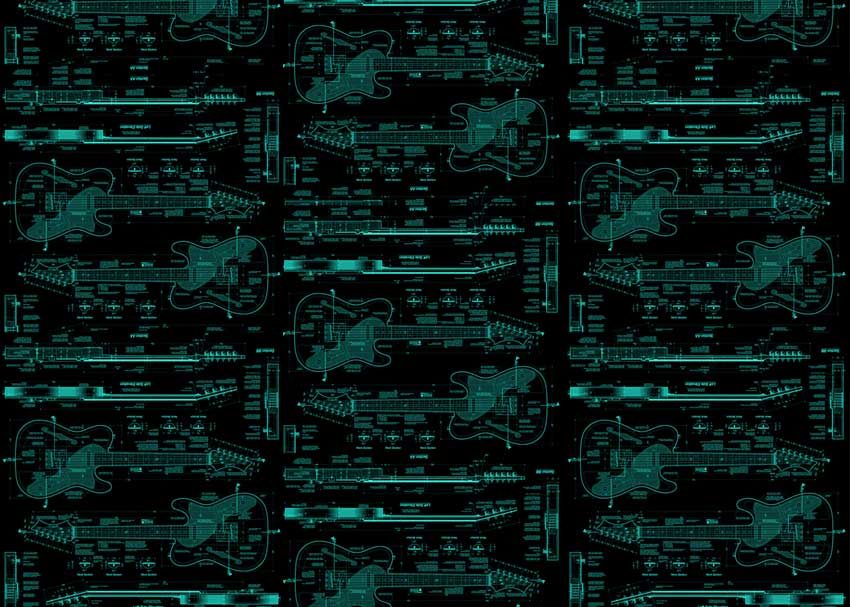Welcome to Part 1 of how to build a parts guitar! Over this series of posts, I will be doing a general walkthrough on how to choose parts, with several guides on how to do basic DIY guitar work at home. I certainly know when assembling your own custom guitar, or simply modifying a guitar you own, choosing the right pieces to make it all happen can seem a bit daunting.
This post will focus on hardware, and how to choose the right components for your needs. After all, this is a crucial step in assembling the body and neck of your guitar. When it comes down to it though, there are a few key considerations to be aware of that will make the decision much easier.
Note: this is a general guide for someone who has a pre-routed body or has already routed the body themselves.
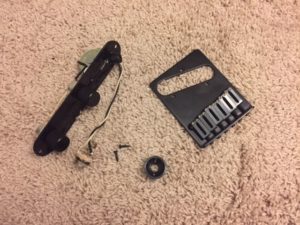
Black hardware for my Tele-style build
Aesthetics
While this might seem like a strange place to start, I’m of the opinion that if you don’t like how your hardware looks in the first place, chances are it will influence your opinion of your guitar itself. Bottom line: if you don’t like the look of gold hardware, for instance, don’t buy gold hardware, no matter if you are getting a steal price or the hardware you wanted only comes in that color. Chances are you can find something else that will get you the look you will be happy with.
Weight
Hardware can come in a wide range of sizes and densities, each with their own pros and cons. For instance, I am currently assembling a chambered semi-hollow Telecaster-style guitar, so it is very very light. Because of this, I chose a Gotoh Modern Tele Bridge because of its higher density. This will make certain that my guitar will have enough mass in the body and retain lateral balance after I install the neck. The same can be said of your other choices for hardware like control plates, strap locks (which are usually much heavier than standard strap buttons), input jacks, and any knob types you’d like. Be sure to check the weight of your choice of tuners, as this also can affect the lateral balance of your guitar in the other direction toward the neck.
Be careful if you are pairing lighter wood necks with dense tuners — such as locking tuners — which will add considerable mass. As a general rule, just be sure to check the weight of each piece individually before purchase, and do some quick math if necessary to see how much it will contribute to your guitar’s weight. That being said, heavy components may be preferable if you simply like the feel of a heavier guitar and don’t have any strong opinions on how parts may affect the tone. Which brings us to our next consideration:
Tone
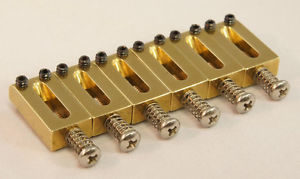
Brass saddles
This has got to be one of the most hotly debated topics in guitar forums, but it does have merit. Different aspects of hardware can and do affect tone, albeit sometimes in negligible ways. Hardware like knobs and input jacks bring largely no change whatsoever in tone because of their function, but components such as bridges and tuners can change the way your guitar reacts to various degrees. Bridges and saddles made from materials like steel, brass, chrome-plated steel, and aluminum all will bring their own character to your guitar.
Try to find a guitar you like the sound of and investigate which material its bridge is made of to get a good idea of your preferences. I am quite partial to brass for its richness of sound and bell-like quality to the lows. Different bridges can sound different when placed on bodies made of different woods, so the possibilities are nearly endless. Experiment and see what you prefer!
Functionality
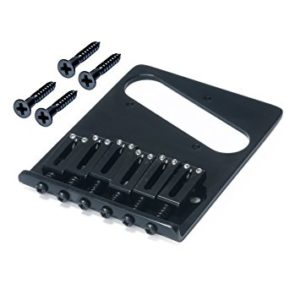
Gotoh Modern 6-saddle bridge for better intonation
The last real consideration should be how the piece functions. For my Tele build, I chose to go with a control plate that was oriented backwards, with the guitar’s volume knob now being closest to my right hand. This, in my opinion, is a more intuitive layout, allowing me to do volume swells while playing, opening up some classic country pedal-steel effects.
Another option is to choose a more modern-style guitar bridge, like a six-saddle Telecaster bridge that will allow much more accurate intonation compared to a 3-saddle vintage style Tele bridge. As mentioned earlier, choosing locking tuners can be a good choice for adding more mass and can save you a ton of time in string changes and allow smoother on-the-fly operation versus standard tuners. Be sure to really assess what you need your guitar to do at this early stage of assembly. The choice of hardware will become much clearer as a result.
While this is a generalized tutorial on choosing hardware, it should arm you with enough knowledge to make an informed decision. Keep a look out for future posts in this series, where we will delve into more topics to consider when constructing or modifying your guitars. Here’s a sneak preview of the custom Warmoth body I will be working with throughout the build:
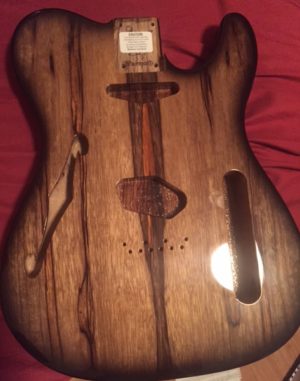
Extra light pre-routed body from Warmoth

